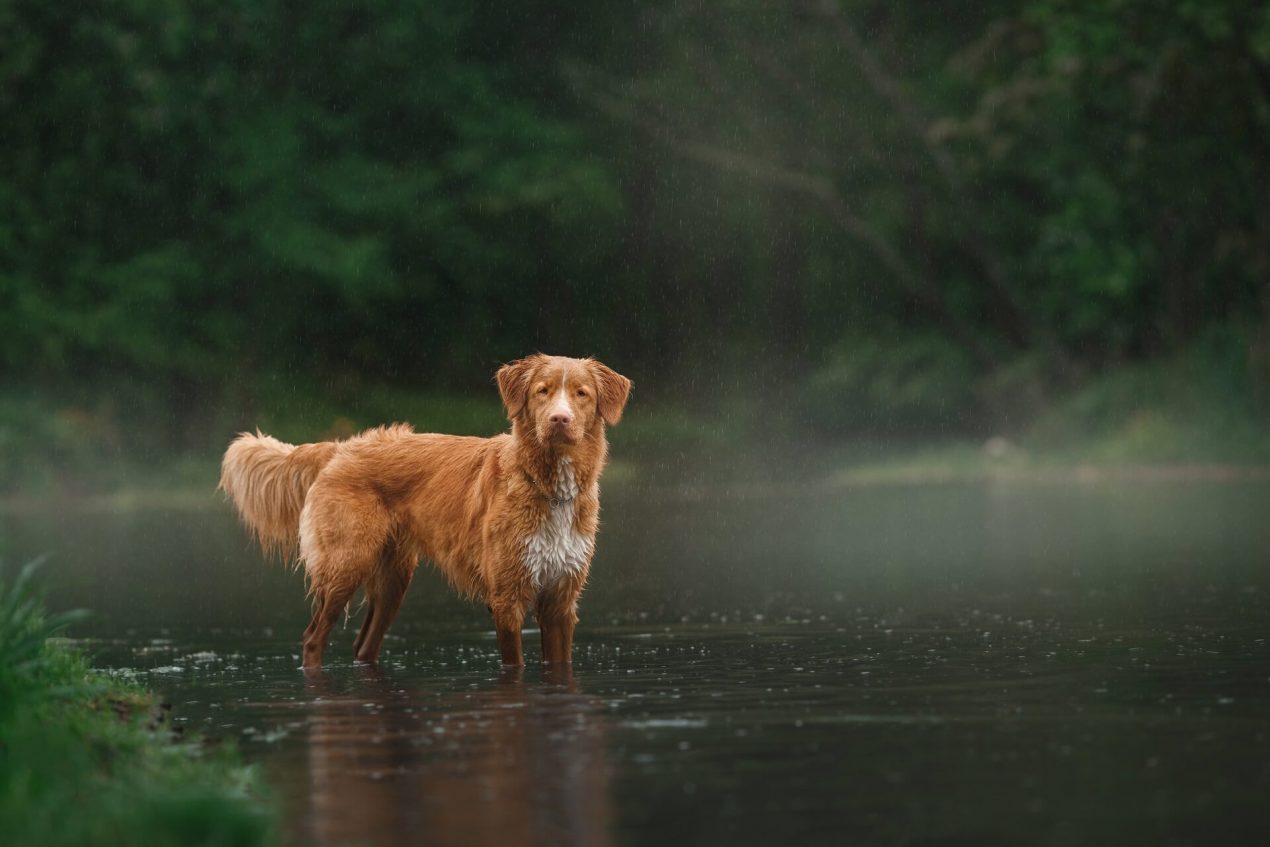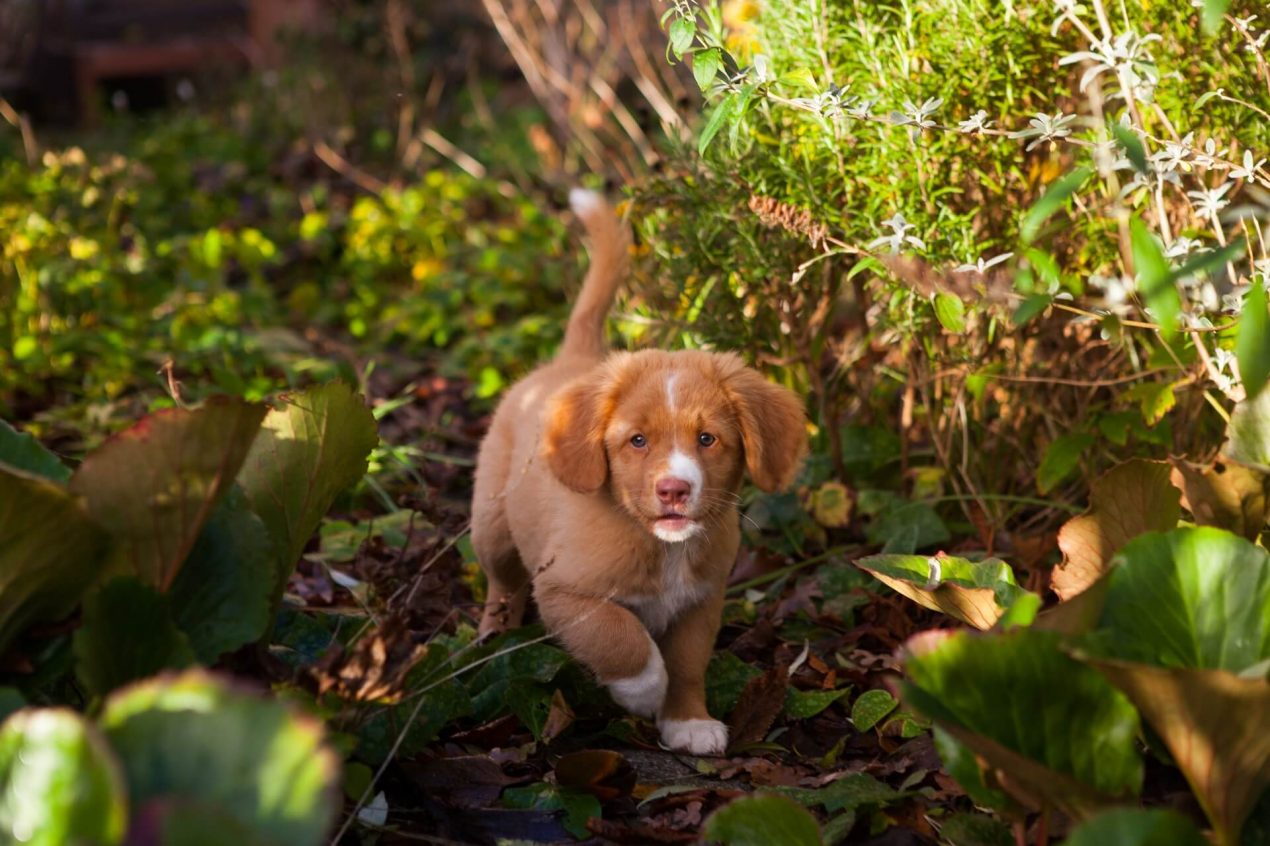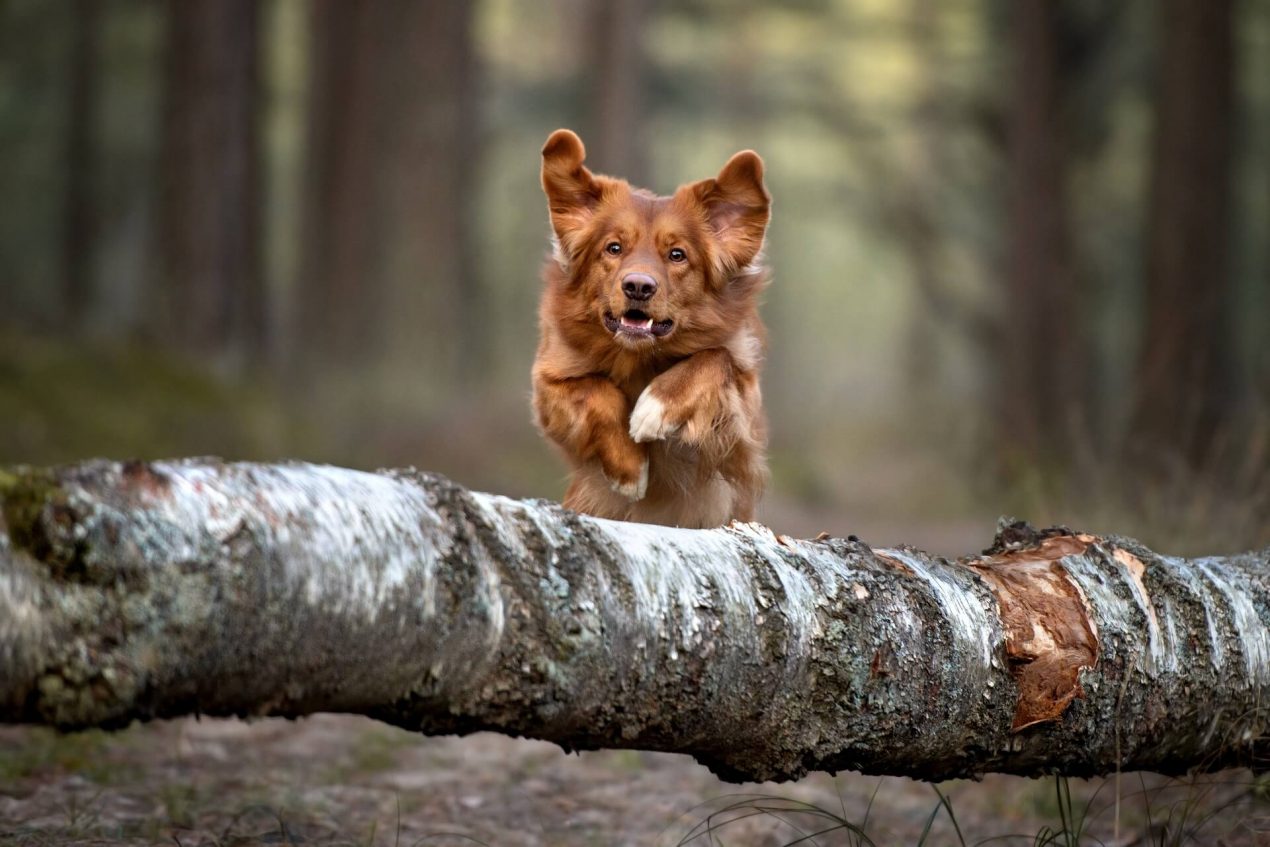The Canadian breed with the long name belongs to the working dogs. A Nova Scotia Duck Tolling Retriever is the smallest member of the Retriever family. The FCI (Fédération Cynologique Internationale) has registered and recognized this breed with standard number 312. It belongs to Group 8: Retrievers, Flushing Dogs, Water Dogs, Section 1: Retrievers, with working trial. A lovable hunting dog with family potential.
- History of the Nova Scotia Duck Tolling Retriever
- Nature and Character
- Acquiring a Nova Scotia Duck Tolling Retriever
- What should I consider when buying?
- Development and training of the puppy
- How do I keep a Nova Scotia Duck Tolling Retriever?
- Activities with the Nova Scotia Duck Tolling Retriever
- Health and Grooming
- Interesting and Worth Knowing
History of the Nova Scotia Duck Tolling Retriever
The exact origin of the Nova Scotia Duck Tolling Retriever is unknown. It is certain, however, that it was bred on the Atlantic coast of Canada in the 19th century. Its task was to lure ducks closer to the shore. It effortlessly achieved this by playing on the shore. Hunters enticed the dogs with toys (sticks, balls). The ducks became aware and curious about this activity. Once they swam closer to the shore, they were shot by the (hidden) hunters. The Nova Scotia Duck Tolling Retriever retrieved the shot ducks and brought them to land.
Where does the Nova Scotia Duck Tolling Retriever come from? One theory about the development of this special breed suggests Scottish roots. Scottish immigrants brought herding dogs from their homeland. They settled in Canadian Nova Scotia, and over time, the present-day dog in Yarmouth County emerged from these ancestors.
Another theory tells a different story. The indigenous Native American population used fox-like red dogs for duck hunting. The immigrants crossed these Native American dogs with other breeds, giving rise to the modern Toller.
It wasn’t until 1945 that the Nova Scotia Duck Tolling Retriever was recognized as a breed by the Canadian Kennel Club (CKC). Due to the small population, this special dog was on the verge of extinction around 1956. The breed recovered, but to this day, this lovable dog remains rare. Recognition by the FCI came in 1981.
Breed Overview
GROUP: Sporting
HEIGHT: 18 to 21 inches (males); 17 to 20 inches (females)
WEIGHT: 35 to 50 pounds
COAT: Medium-length double coat with a soft undercoat
COAT COLOR: Red, red-gold, or buff, often with patches of white
LIFE SPAN: 12 to 14 years
TEMPERAMENT: Intelligent, energetic, affectionate, alert, outgoing
HYPOALLERGENIC: No
ORIGIN: Canada
Nature and Character
The Nova Scotia Duck Tolling Retriever is very playful. This trait is not only present in young age but lasts into old age. This intelligent four-legged friend is affectionate and loves its family above all. A Toller always wants to please its family. Nevertheless, you must not forget to mentally challenge this sensitive and spirited companion. This is not difficult as it is eager to learn. It barks happily and “defends” its territory.
This could provoke trouble with the neighbors. Aggressive behavior is foreign to it. It tends to be reserved around visitors. Due to its friendly nature, it has little difficulty with other dogs. Part of its nature leans towards a certain stubbornness. This independent trait makes it even more lovable and does not cause major problems. It simply signals, “That’s enough now. I’m not interested anymore.”
| Affection Level | High |
| Friendliness | High |
| Kid-Friendly | High |
| Pet-Friendly | Medium |
| Exercise Needs | High |
| Playfulness | High |
| Energy Level | High |
| Trainability | High |
| Intelligence | High |
| Tendency to Bark | Medium |
| Amount of Shedding | High |

Acquiring a Nova Scotia Duck Tolling Retriever
When acquiring a Nova Scotia Duck Tolling Retriever puppy, consider: “Do I have enough time to devote to this lovable retriever?” It is completely unsuitable to wait alone at home for hours on end for its owner. It is happy when it can be a full-fledged member of its family. Certainly, a Nova Scotia Duck Tolling Retriever also enjoys quiet hours in its dog bed. For its mental well-being, appropriate and mental stimulation (fetching, search games) are just as important. It is the ideal family dog for an active family with children.
What should I consider when buying?
You should not underestimate the issue of inbreeding with this rare breed. Responsible breeders of the Nova Scotia Duck Tolling Retriever can provide proof of health checks for the puppies. Additionally, the pedigree is documented and traceable in the papers. Having a personal conversation with the breeder is important and is also desired by them. The Retriever Club of America and the American Kennel Club (AKC) are happy to provide information about reputable dog breeders.
You will rarely find a Nova Scotia Duck Tolling Retriever mix. Likewise, few representatives of this breed can be found in animal shelters.
Development and training of the puppy
Nova Scotia Duck Tolling Retriever puppies are friendly, playful, and spirited. They are not fully grown until they are 18 months old. They can easily “charm” an inexperienced dog owner with their demeanor. Are Nova Scotia Duck Tolling Retrievers suitable for beginners? Since they are hunting dogs and particularly attentive and vigilant, they are not exactly suitable for beginners or as family dogs.

A strong bond between the two partners is important. This breed aims to please. Loving, consistent training (without harshness) with varied learning sessions are the foundation for a shared future. The desire to learn is great. This intelligent, curious, and playful Canadian is easy to train. The only requirement is that the training must not be boring and dry.
If the training is not enjoyable and lacks cuddles as rewards, the Scottish stubbornness comes to the fore. This means a Nova Scotia Duck Tolling Retriever puppy forgives mistakes but not boredom or impatience.
How do I keep a Nova Scotia Duck Tolling Retriever?
Apartment living is possible without any problems. Daily trips to nature should provide the necessary balance here. Ideally, living in a house with a garden is preferable. A Nova Scotia Duck Tolling Retriever loves living with children.
Activities with the Nova Scotia Duck Tolling Retriever
The athletic Nova Scotia Duck Tolling Retriever needs to be challenged. Don’t worry, he’s not a high-performance athlete. Biking and jogging combined with a nearby water source (stream, lake) are sufficient. The Toller loves swimming and retrieving more than anything. He particularly enjoys these activities with his human companion. He requires a lot of exercise, especially.
Dog sports such as Flyball, Agility, or demanding dummy training are possible forms of activity. The intelligent Nova Scotia Duck Tolling Retriever can also be kept busy with tricks and intelligence toys. Activities should be varied and tailored to both the two-legged and four-legged participants. Monotonous ball games do not do justice to the breed and carry the risk of turning him into a ball junkie.
Health and Grooming
Duck Tolling Retrievers can live to be between 10 and 14 years old. A Nova Scotia Duck Tolling Retriever is not high-maintenance. Regular brushing is entirely sufficient. It becomes a bit more demanding during shedding season. You should brush him daily during these times, otherwise, he’ll shed his fur all over the living area. Checking the ears, paws, and claws at regular intervals is sufficient. He shows his love for water on every occasion. He takes advantage of every stream, puddle, or mud pit. Cleaning with a garden hose is easily possible.

In general, the Nova Scotia Duck Tolling Retriever is considered a robust breed. Unfortunately, the gene pool for these rare dogs is small. This often leads to immune diseases. Tolling Retrievers are often predisposed to Meningitis-Arteriitis (SRMA), adrenal insufficiency, or polyarthritis. Eye diseases, hip dysplasia (HD), and elbow dysplasia (ED) occur more frequently due to the small population.
Interesting and Worth Knowing
The Nova Scotia Duck Tolling Retriever is a rare representative of the Retriever breeds. Additionally, this Canadian is the smallest and most playful dog of its kind.
Due to its fur color (orange to red), the Nova Scotia Duck Tolling Retriever is also referred to as a fox, especially when no white markings are present.
Do you have a Nova Scotia Duck Tolling Retriever or are you considering getting one? Tell me in the comments what makes him so special in your opinion!


